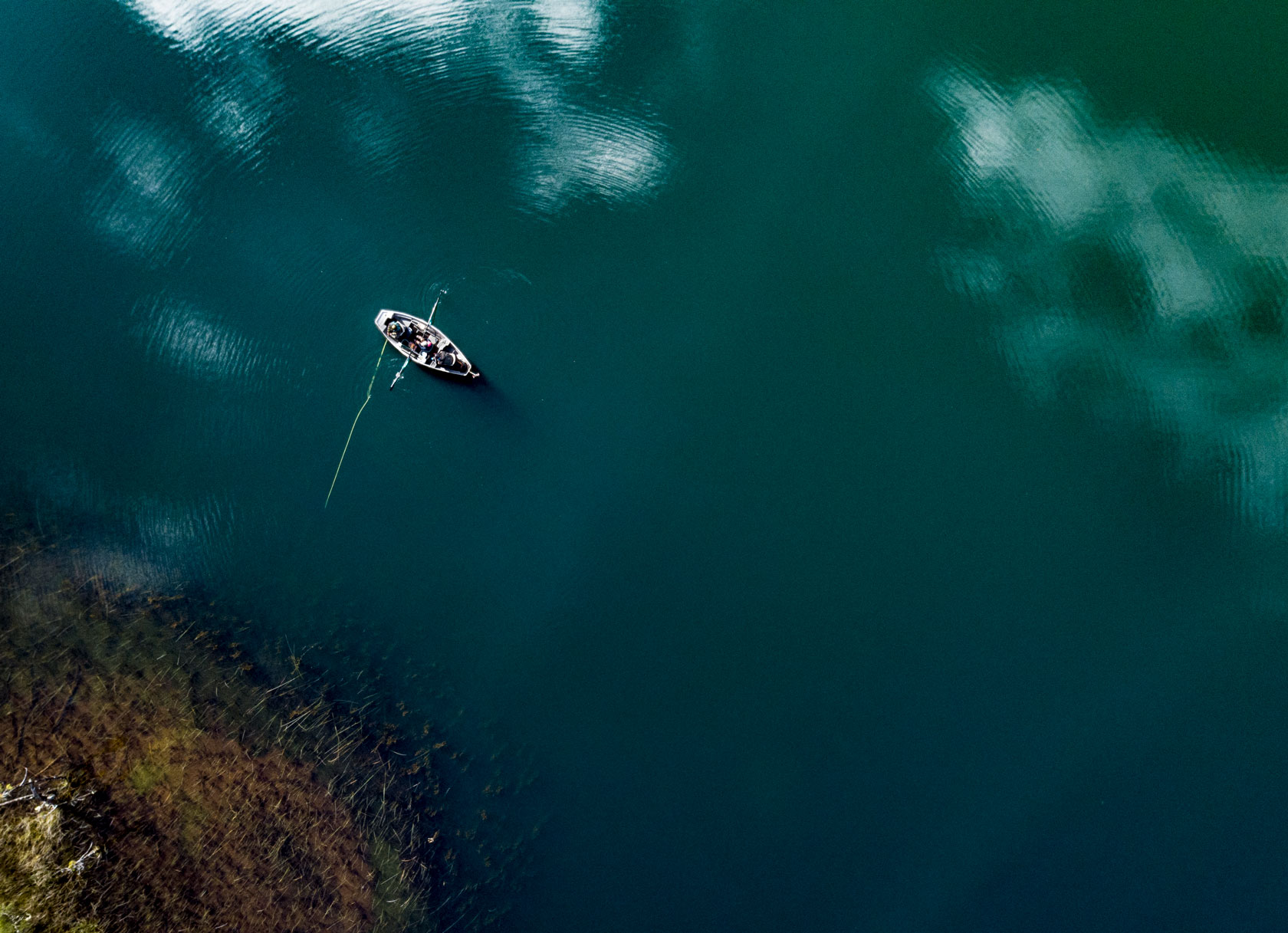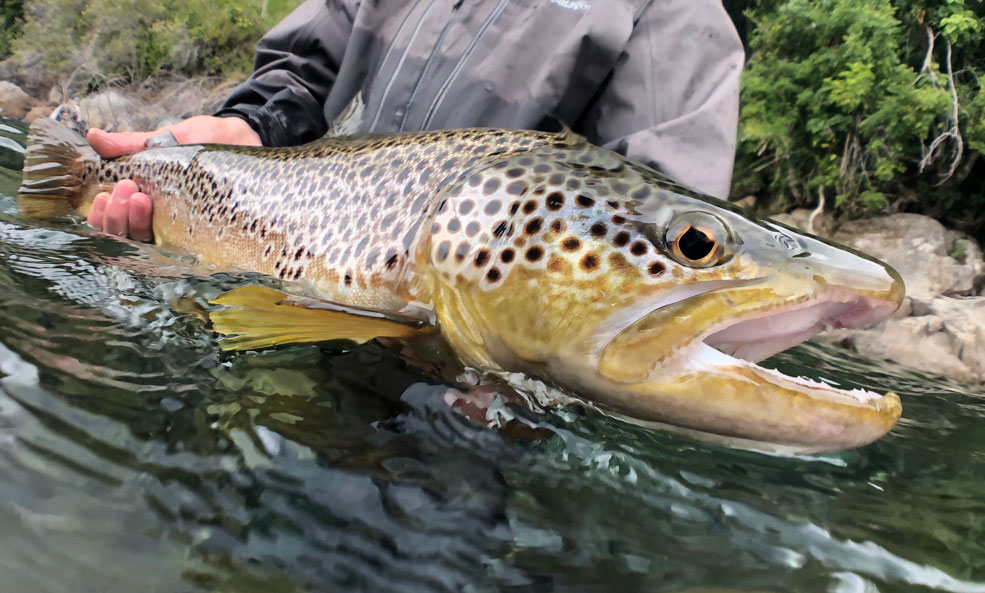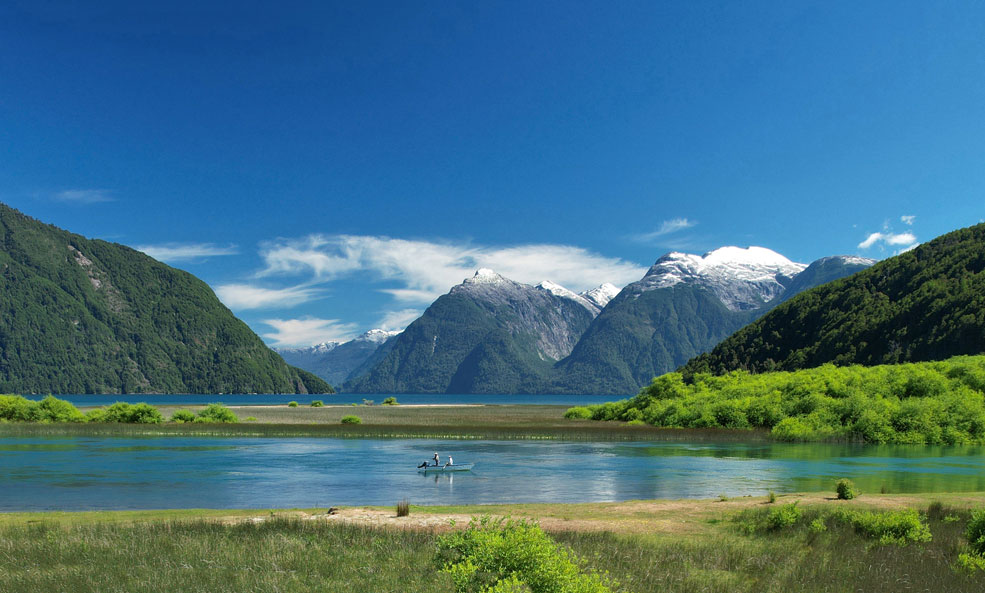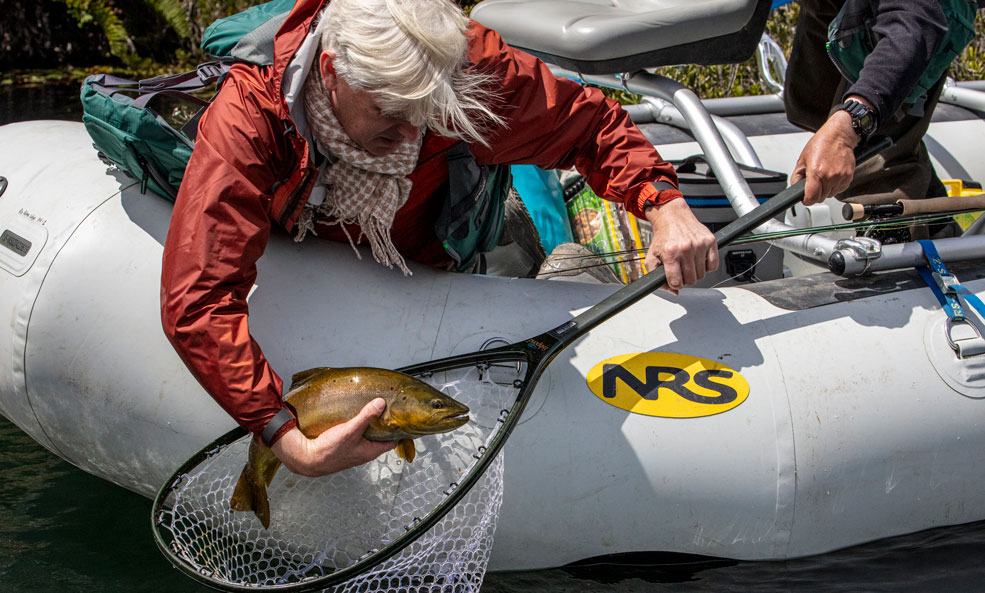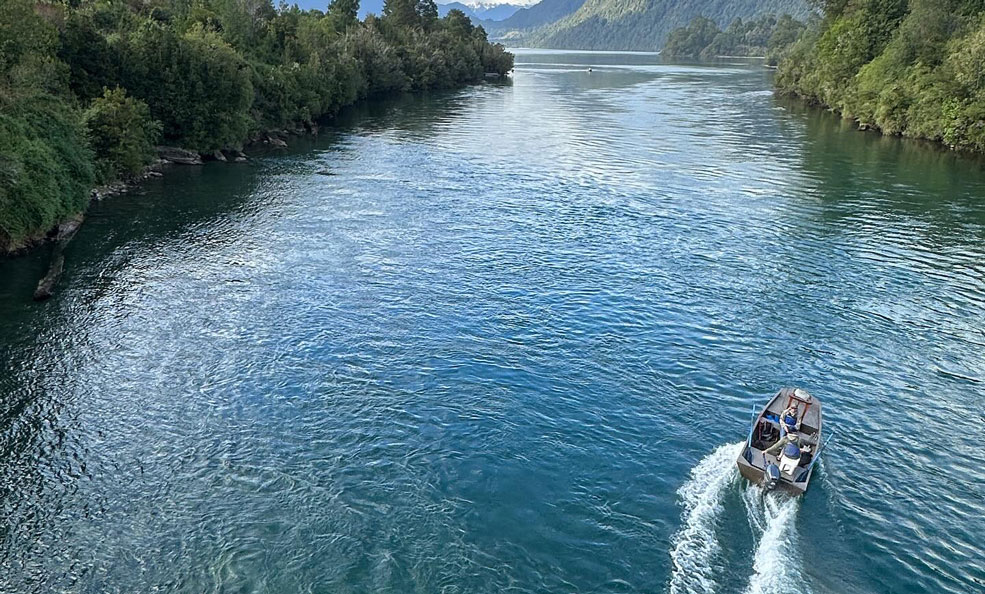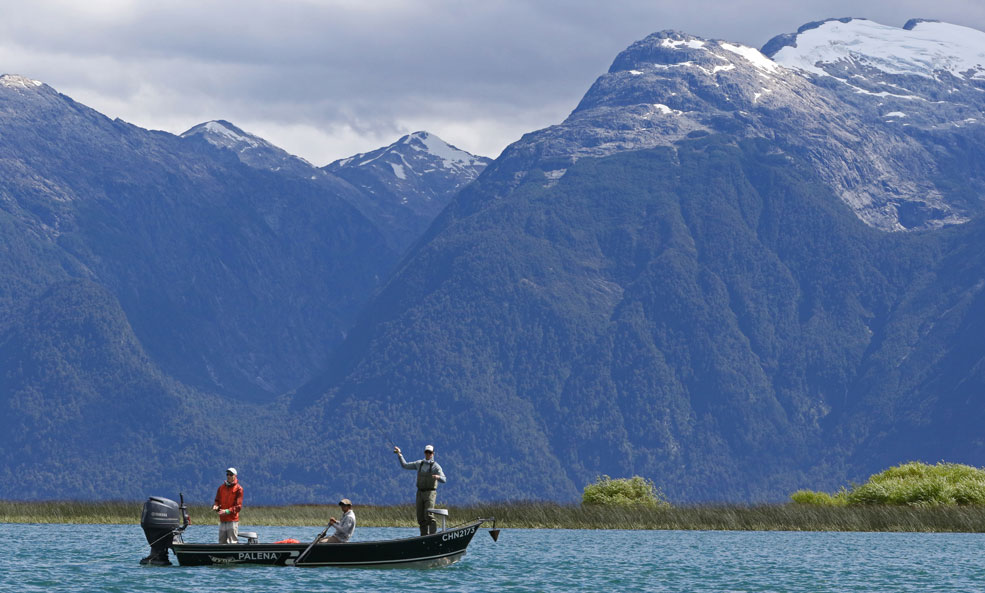The Ins and Outs of Fly Fishing River-Lake Systems in Chile
December 19, 2024
ChileEleven Rio Palena LodgePatgoniaAngling
North American anglers often find themselves intrigued by the prevalence and importance of river-lake systems in South America.
Unlike in the U.S., where our fishing experiences are heavily influenced by dams and the tailwater fisheries they create, natural lakes with free-flowing rivers entering and exiting are a rare and coveted find for those visiting. In fact, the Yellowstone River, flowing out of Yellowstone Lake, stands alone as the only undammed river in the lower 48.
At Rio Palena Lodge and the two properties that make up Martín Pescador Lodge, the river-lake system plays a central role in Eleven’s fly fishing programs. While this is only one of our many angling scenarios, it’s an incredibly unique one and worth studying as a stand-alone case for conditions and techniques. These inlets and outlets are not just home to impressive rainbow and brown trout; they also host a dynamic and ever-changing environment rich in insects, baitfish, and migratory species. Guides are experts at reading these seasonal shifts, but as an angler, understanding these cycles can greatly enhance your fishing experiece.
Streamer Eater
The average fish in this area would be large by most standards. But there are truly large trout potentially available on every cast.
Springtime
In the Southern Hemisphere, spring fishing aligns with Thanksgiving in the Northern Hemisphere, offering anglers a spectacular anadromous fish feast.
Many Chilean rivers are home to salmon species, primarily chinook, introduced years ago. As the spring flows intensify, these salmon fry (1 to 1.5 inches long) and smolt (3 to 4 inches long) begin their downstream journey toward the sea.
River bocas (mouths) and inlets become prime spots where trout gorge on this migration buffet. We fish with small fry patterns, much like those used in Alaska, and three-inch streamers that mimic the smolt. In open water, you might witness a dramatic explosion near a river mouth – likely a large trout chasing smolt. A quick cast with a white, flashy streamer to that area almost always results in a strike.
Anglers often find success using a sturdy 6-weight rod paired with a floating line. For the moving waters just upstream from the lake, at the river mouth, and at every drop-off, a rod rigged with a sink tip is ideal. (And for those visiting Eleven Angling lodges, all fishing tackle is provided.)
A PLACE FOR AMBUSH
Predatory rainbow and brown trout stage here and aggressively feed on downriver migrating salmon fry and smolt, as well as the local puyen and other baitfish.
Summertime Eeling
In late December, a captivating event unfolds in the transition zones around inlets and outlets. Small fish known as puyen (pronounced pu-yay) begin to gather in these areas.
Comparable to whitebait in New Zealand, puyen are not true eels. Their elongated, slender bodies resemble eels, which is how they earned the nickname. These fish can range from tiny one-inch juveniles to full-grown adults over six inches long. As juveniles, puyen often form large schools, thousands of three-inch fish banding together for safety in numbers. These schools reliably gather in the same spots each year, and the trout are aware of where and when to find them. While it’s not an all-day event, hitting a blitz of big trout attacking panicked puyen is bound to be a highlight of your trip. Eleven guides craft custom-tied fly patterns specifically for this purpose, as imitations of puyen are not readily available in fly shops.
THE THRILL OF VICTORY
An Eleven guest and guide experience the high of successfully bringing a hefty Patagonian fish to hand.
RUNNING LAPS
Sometimes guides will motor upstream to a lake, drift a third of a mile through the outlet, then lap back, doing this several times. It’s a great way to land fish on streamers in areas with high concentrations of fish, all of them voracious streamer eaters.
The Dragonfly Hatch
From New Year’s through January, the eagerly awaited dragonfly hatch comes into full swing.
Before this time, fishing dragonfly nymph patterns around reed-covered shorelines and weedy shallows is highly productive. A dry-dropper rig works wonders, keeping the dropper fly in the strike zone consistently. Casting near the reeds, where the water depth ranges from five to seven feet, and into the potholes in the weeds, is both fun and effective—a technique the guides have mastered.

When adult dragonflies begin to hatch, our focus shifts to dry dragonfly imitations. Some flies are crafted to be realistic, while others are oversized chubbies or Fat Alberts. The chubbies and Fat Alberts not only cast more easily than the realistic patterns but also offer a better hook-up rate. A typical day at Martín Pescador’s Rio Yelcho Lodge might start with breakfast, followed by a short boat ride a mile upriver to Lago Yelcho. Occasionally, the guides will slow down at the outlet to check for puyen action before heading to the lake, bordered by miles of reed-covered shoreline.
It’s common to see trout leaping into the air, aggressively snatching or knocking down dragonflies. The technique used here is simple: cast 35 to 45 feet toward the edge of the reeds, let the fly sit for a few seconds like a bass popper, then start twitching it. Strikes usually come from the reed edge or within six feet of it. Two anglers can fish simultaneously, and with the visual hits, misses, and near-constant action, it’s sure to be a memorable day. Rainbows and browns here average 17 to 21 inches, with larger fish spotted daily. And no matter where you look, the scenery is just as breathtaking as the fishing.
OPTIONS
Eleven guests can bring their own flies from the Northern Hemisphere. Our guides also provide all the necessary flies.
NONSTOP ACTION
A nice brown landed on a Fat Albert, a large terrestrial which works well in lakes and rivers. Fish here feed aggressively, making for memorable eats.
RIGGED FOR THE MISSION
Eleven provides all guests with top-of-line fly fishing and wading equipment.
IDEAL TROUT HUNTING GROUNDS
Here, anglers cast in a shallow bay lined with reeds and spotted with weed beds, a spot where guides can row, wind drift, and cover lots of water.
The Remainder of the Season
As the dragonfly hatch tapers off in February, seasoned anglers know the value of targeting the inlets and outlets for the rest of the season.
This classic approach to streamer fishing involves working fast-sinking or sink tip lines near inlet drop-offs, along cliffs, and over large boulder-strewn shorelines. These areas are prime territory for landing massive brown and rainbow trout with olive, black, or white streamers, as well as other inventive patterns crafted by guides. At the inlets, guides will row upstream before drifting back down over the drop-offs, while at the outlets, they reverse the process, starting from the lake and drifting into the river.
Streamer fishing can be highly productive and is often a go-to at the beginning of the day. Many of our river floats start on a lake and quickly transition to a 10-mile, free-flowing river trip. That first half mile can be red-hot on streamers. Then, shifting to a single dry terrestrial or a dry-dropper rig around the inlets and outlets can be highly productive. It is quite common to fish chubbies, Fat Alberts, black crickets, and hoppers for the rest of the float—a great combination.
Understanding the varied techniques for river-lake systems is crucial, but all the strategies covered here share one key element: casting. Fly fishing in Chilean Patagonia demands precision with 6- and 7-weight rods, larger flies, and sometimes a sink tip line. While casting on bright, sunny days is a pleasure, the notorious Patagonian wind can quickly change the game. Practicing casting skills and taking a lesson to prepare for these conditions will prove invaluable. Strengthening casting muscles and honing the ability to handle big fish with big flies will serve you well, not just here, but wherever your fly fishing adventures take you.
Get in touch with our team to learn more.
